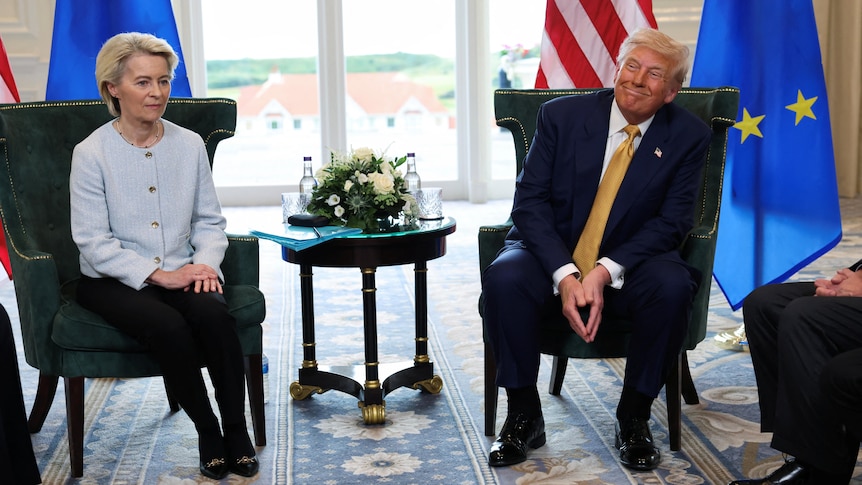Overview
In a significant development in international trade relations, U.S. President Donald Trump has announced a breakthrough deal with the European Union, introducing a 15% reciprocal tariff on select imported goods. The agreement, struck after extensive negotiations with European Commission President Ursula von der Leyen, marks a new chapter in transatlantic economic policy and is aimed at promoting “fair and balanced” trade practices.

🔹 What the Deal Includes
The core of the agreement involves:
A 15% reciprocal tariff on industrial and agricultural products
A mutual pledge to reduce non-tariff barriers, streamline customs procedures, and increase cooperation on tech and green energy sectors
Specific measures to protect domestic industries in both regions from what Trump referred to as “unfair foreign competition”
This deal is part of Trump’s broader strategy to realign global trade partnerships in favor of U.S. economic interests, while encouraging more investment and job creation at home.
🔹 Why Now?
The announcement comes at a critical time:
Both the U.S. and EU are dealing with economic slowdowns, inflationary pressures, and rising public debt.
The post-pandemic global economy has led to a surge in protectionist policies.
Trump’s administration had earlier threatened higher unilateral tariffs if the EU failed to meet certain trade obligations, especially in the automotive and tech sectors.
By reaching this agreement, both sides have avoided a potential trade war that could have destabilized global markets.
🔹 Reaction from the Global Community
The international reaction has been mixed:
U.S. businesses involved in export-heavy sectors welcomed the deal, seeing it as a step toward reducing Europe’s long-standing regulatory barriers.
European stakeholders expressed cautious optimism, though concerns remain about the impact on small and medium-sized enterprises (SMEs) and consumer prices.
China and other major trade partners are closely monitoring the development, as it could reshape alliances in global trade.
🔹 Trump’s Statement
Calling it a “win for American workers and farmers,” Trump emphasized that the agreement is designed to restore fairness in the U.S.–EU trade relationship. He also hinted at similar bilateral agreements with other global powers, saying“This is just the beginning of a new era in trade diplomacy.”
🔹 What’s Next?
Analysts expect:
The agreement to face scrutiny in Congress and European Parliament
Potential legal challenges from industries or labor unions
A shift in global trade dynamics, especially if other countries feel pressured to renegotiate their own deals with the U.S.
🔹 Conclusion
This tariff deal represents more than just a fiscal arrangement—it reflects the ongoing geopolitical repositioning of the United States under Trump’s leadership. It signals a desire to assert economic dominance, reclaim trade balance, and reduce dependency on foreign supply chains.
